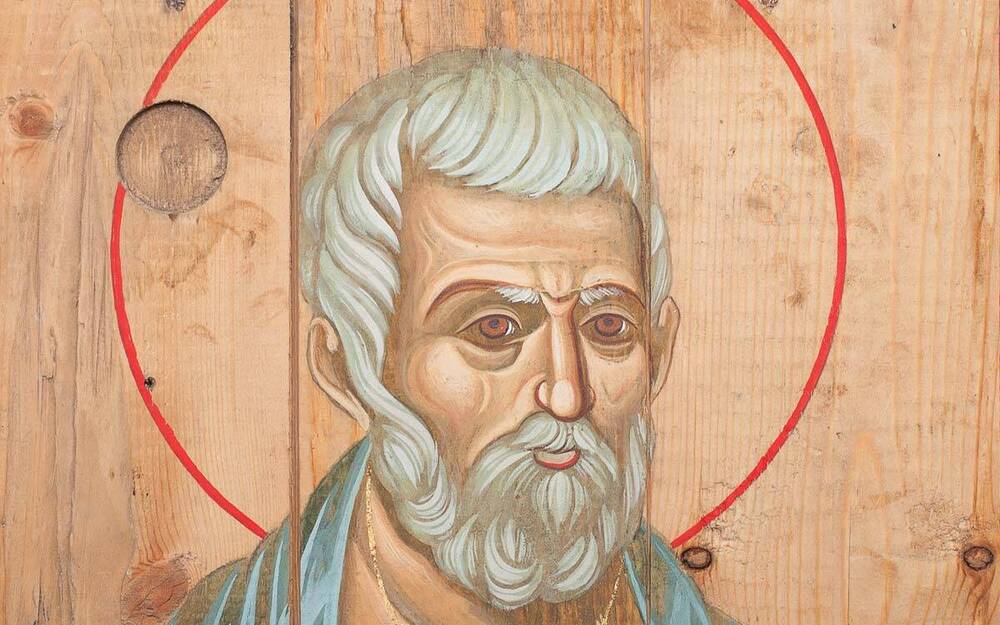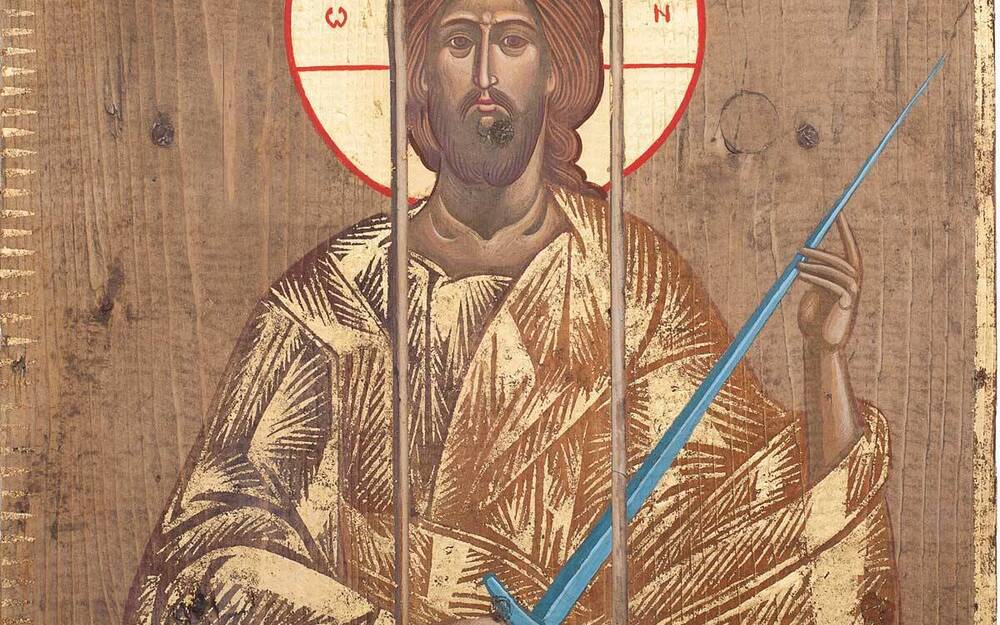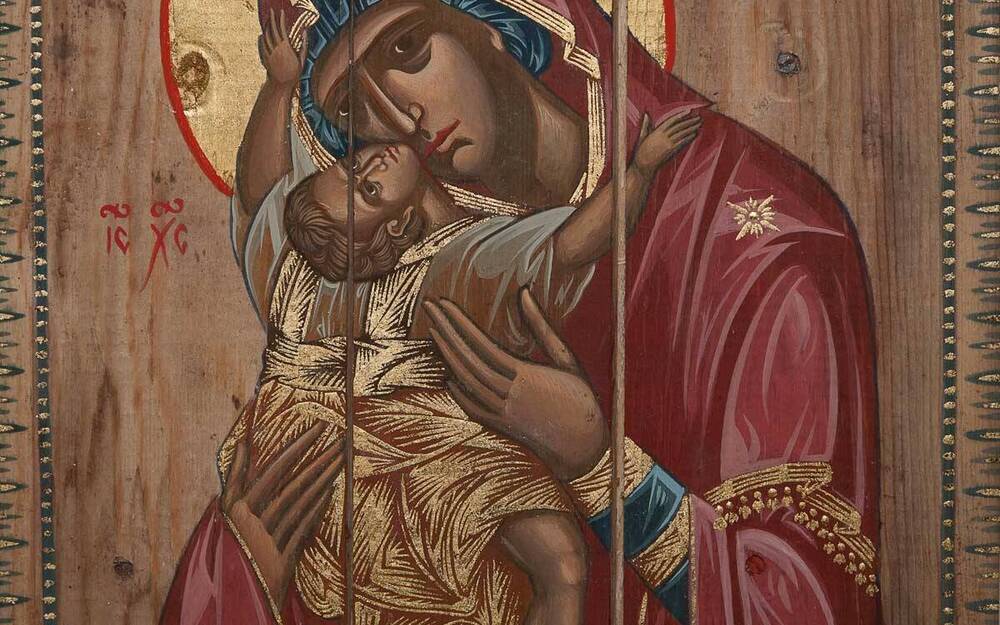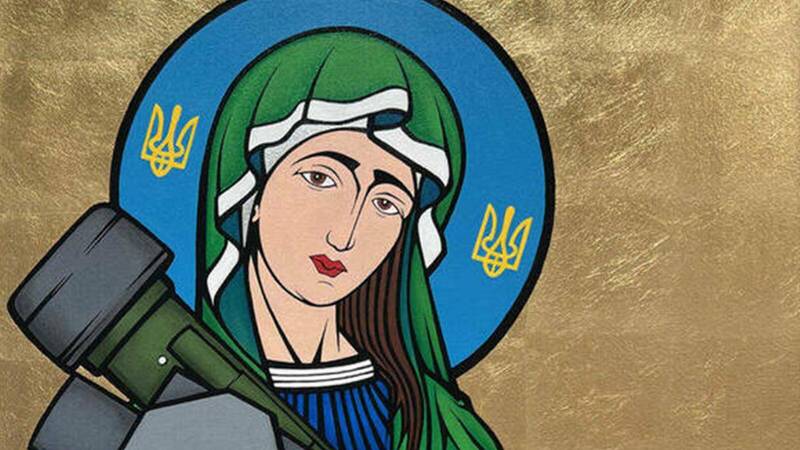
Ammunition Box Icons
Ukrainian Art as Protest and Resilience
By Jacqueline McKenna '23
Title: Icons on Ammunition Boxes
Artist: Oleksandr Klymenko and Sofia Atlantova
Format: Paint on wood
Placement: Public marketplace, social media
Since 2014, around 13,000 Ukrainians have been killed in the eastern Donbas region. The Ukrainian artist couple Oleksandr Klymenko and Sofia Atlantova have gathered the lids and bottoms of discarded ammunition-boxes from Donbas and used them as canvases for Orthodox Christian icons. By rethinking the notion of the canvas, the couple, who specialize in monumental and easel arts, create a powerful iconography that incorporates the lived experience of wartime and destruction with the heritage, traditions, and visual language of Ukrainian religion.
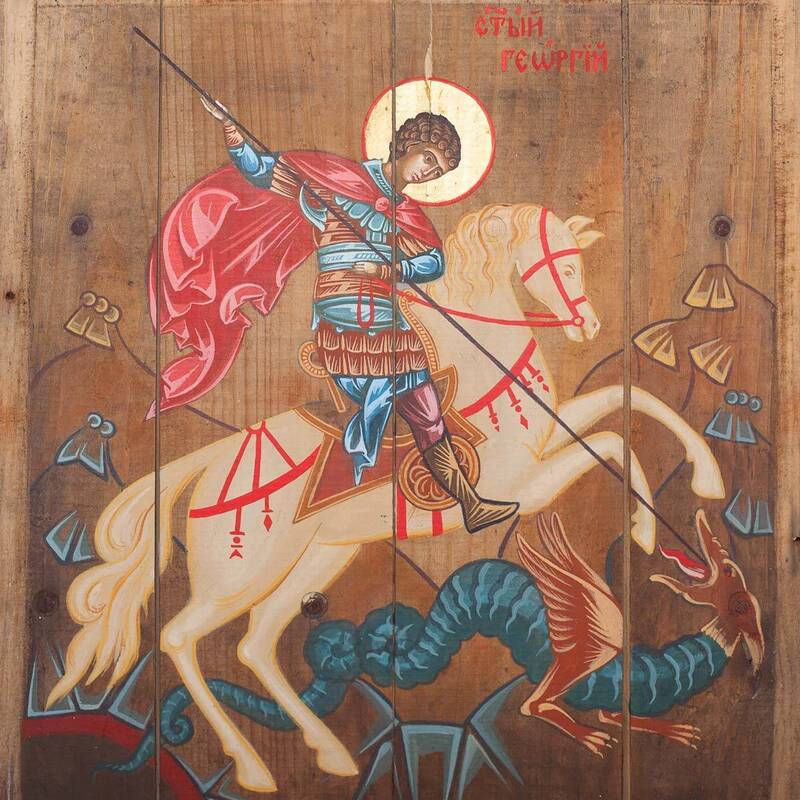
In the words of Klymenko, “Most people think of this war as something very far away. It was important for me to show people that the war is real, that this ammunition box is real, and it stored real weapons that killed real people.” The goal of their art is to translate the cost of human loss into art, and thus demonstrating solidarity with Ukranians. Since the first Russian invasion of Crimea, the pair have raised more than $300,000 USD by selling their works, with funding going to the Pirogov First Volunteer Mobile Hospital in the Donbas region, a non-governmental project that brings doctors to the eastern frontline. Their “Buy an Icon - Save a Life” project tagline places life and death are at the core of this artistic exercise. By creating these icons, Klymenko and Atlantova provide a vehicle for resistance, consciousness and protest.
The idea of using disposable, everyday materials as art began in the twentieth century. Kurt Schwitters began collecting trash and disregarded literature from his native Germany to create collages influenced by Dadaism. More recently in the U.S., Robert Rauschenberg infamously raised the status of ordinary objects, such as his Monogram piece from 1955-1959, as art.
Klymenko and Atlantova drew their inspiration for the ammunition-box icons while on a visit to a military base in 2014 where Klymenko observed similarities between the boxes and wooden panels used for ancient religious art. With the help of soldiers and medical volunteers who bring the ammunition-boxes to the artists’ studio, the couple are part of a wider dialogue of repurposing overlooked materials in the history of art. In their work, Klymenko and Atlantova bring such materials into a new context of war and destruction.
Klymenko and Atlantova create a conversation with twentieth artists, but their icons formed from ammunition-boxes are inherently traditional and historical, recreating Orthodox Christian imagery of the Virgin and Christ Child and other religious figures in such pieces as “Guardian Angel” and “St George and the Dragon.” Klymenko has remarked that his icons appear to be “at least 800 years old” and derive from the Byzantine style in their two-dimensionality. In an apparent paradox, the couple blends the ancient with the modern, making us aware of humankind’s long, arduous relationship with conflict and war. By targeting a contemporary audience that is ready to purchase these works for the purpose of humanitarian relief for the victims of the war, this traumatic history is repurposed for the current age. This serves to tell a striking message about the socio-political impact of war on innocent civilians within Ukraine while at the same time expressing art as a form of resilience.
Research by Jacqueline McKenna ’23
Header image: “St Javelin” by Chris Shaw, acrylic and metal leaf on canvas, completed in March 2022. Image used with permission from Chris Shaw and saintjavelin.com.
Art by Oleksandr Klymenko and Sofia Atlantova. Images shared with permission from the artists.
Read the project introduction and background.
